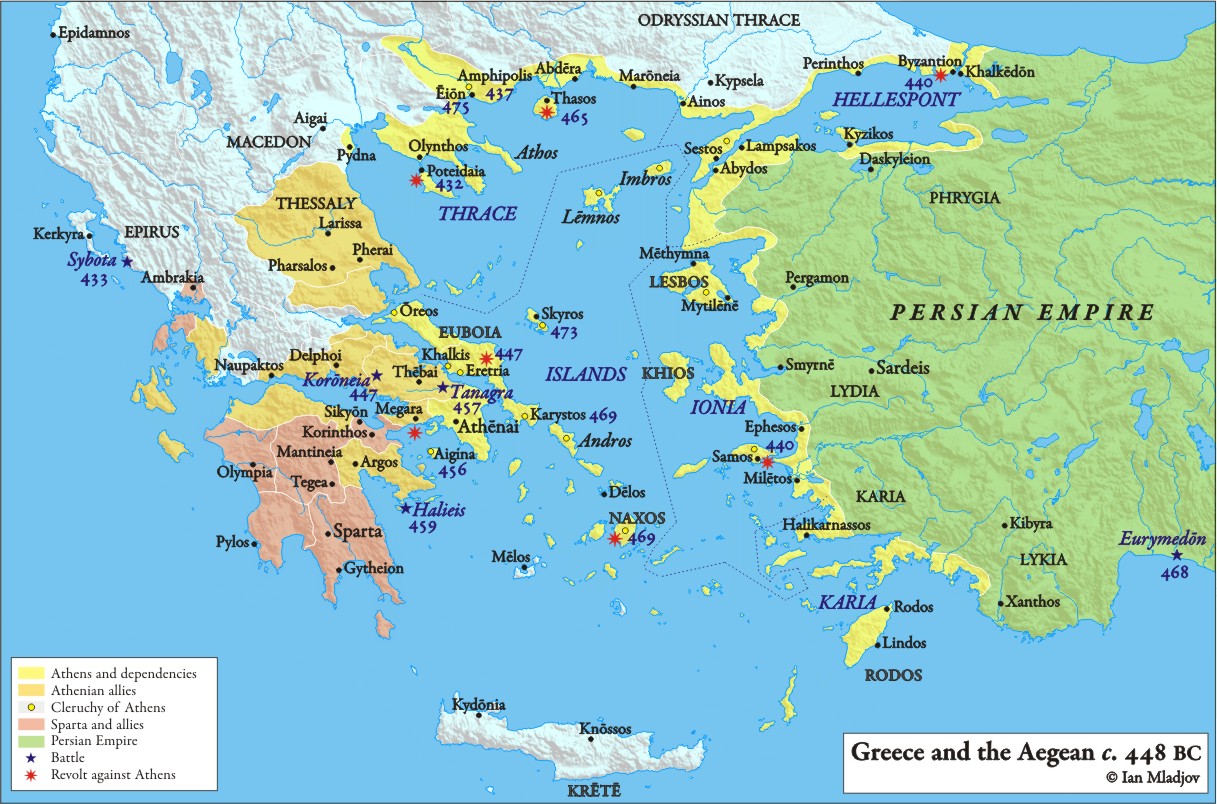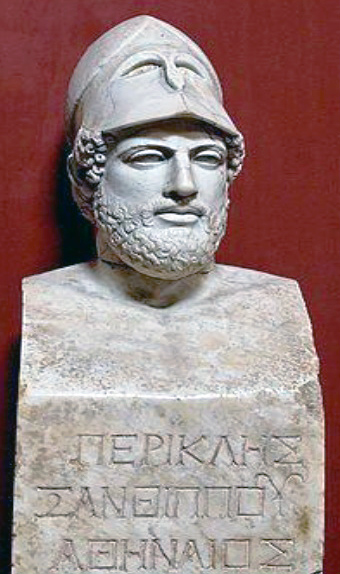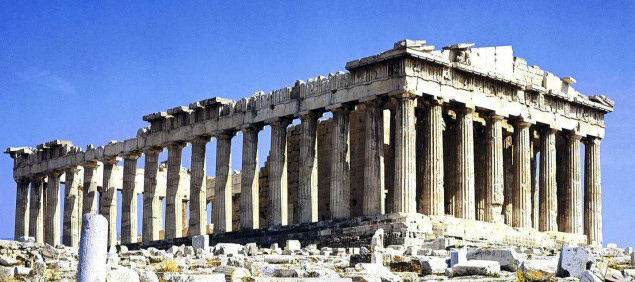It was a fifty-year period between the Greco-Persian and Peloponnesian wars. In this period, the Athenians have gained dominance in the Aegean Sea, economically strengthend, enhanced their social life by developing democracy and reached high cultural rise.
After the Persians in 479 BC in the fall. Cr. left Greece, Athenians began to rebuild the city. They rebuilt the walls of the Acropolis (Citadel), raised a new a ones around all over town, and then built the walls and established the port of Piraeus. The most credit for that had Themistocles.



In 478 B.C many Greek cities in Asia Minor coast, the Thracian coast and the Aegean islands made maritime military alliance with Athens (Symmachia) – Delian-Attic union (Delian League). The purpose of this alliance was a common defense against the Persians and the Persians for punishment inflicted injustice. Allied leaders agreed to build a joint navy, each year to pay a contribution (phoros) for the construction of ships and in the case of war Athens would be in command. The size of the contribution of each ally was appointed by chief organizer association the Athens Aristides. The Alliance was called Delian-Attic because its seat was initially on the island of Delos (Temple of Apollo) and because the Attics had the final say in deciding. In 454 B.C The Athenians transferred coffers association from Delos to the temple of the goddess Athena on the Acropolis. With that money Athenians damaged allies and used it to build the city. With Alliance, Athens gained supreme power over the Aegean Sea and became the first Greek state at the time.
In the first decade of Pentecontaetia, during the renovation and the first actions of alliances, in Athens were held intense political struggles. There distinguished Aristides, Themistocles (ostracised, died in Asia Minor), Cimon (son of Miltiades, an ally of the Spartans, after the third messenian war was ostracised) and Ephialtes (leader of the Democrats). At that time the Athenians defeated the Persians and the cities that wanted to get out of the alliance, while with the Spartans they made a thirty-year peace.
The Age of Pericles



After the death of Ephialtes, leader of the Democrats became Pericles. From 443rd to 429th B.C the Athenians elected Pericles each year for a strategists. This continuous power allowed him to carry out economic, social and cultural program, and by skillful foreign policy he had provided the Athenians first place among the Greeks. He introduced misthophoria (receiving wages for the performance of the civil service). In his time, democracy was the most developed. The people elected the members of the Assembley, criticized and deposed government officials, made laws, decisions about war and peace and finances, and about all important affairs of state. The most difficult economic problem, the problem of landed property, the Athenians solved by establishing settlements and Cleruchies (settlement where residents kept Athenian citizenship and were dependent on the metropolis).
In the age of Pericles Delian-Attic alliance turned into a Athenian empire. Athens was then a master of its former allies and the first force in the Aegean Sea. Allies were no longer minted their own money, but they served Athens. The money from the allied cash was spent to decorate Athens. It developed crafts, merchant and maritime.



Pericles completed Themistocles and Cimons works on the renovation, expansion, strengthening and beautifying the city. The most famous monuments of Pericles’ time had been built on the Acropolis: Iktinos and Kallikrates raised Parthenon (temple of Athena Parthenos), that was the most perfect monument of Greek architecture, famous for the statue of Athena Parthenos of Pheidias. Mnesikles built the Propylaea, the monumental entrance to the Acropolis. At that time it began to build Erechtheion and a small temple of the Nike (goddess of victory), that were completed after Pericles’ death.
